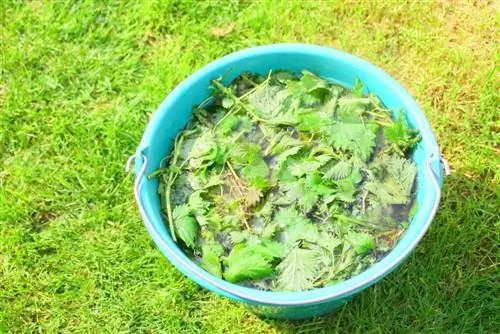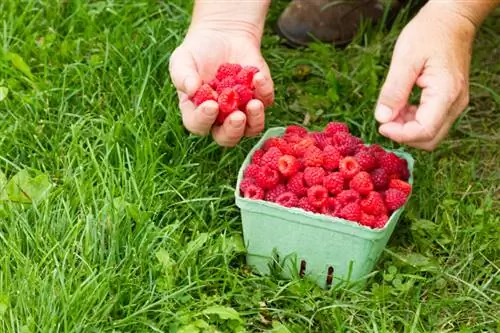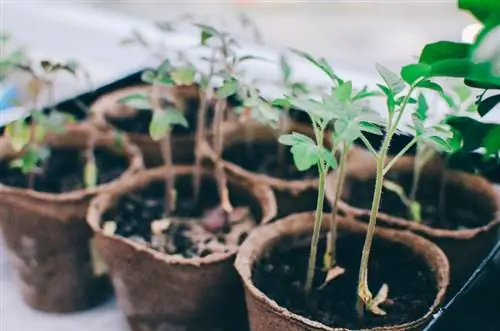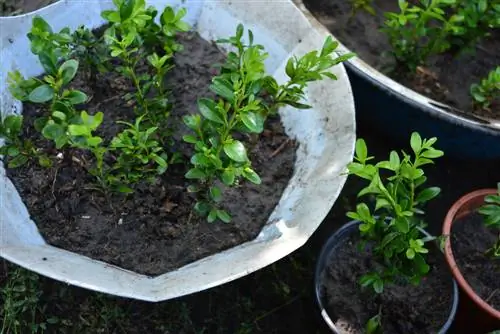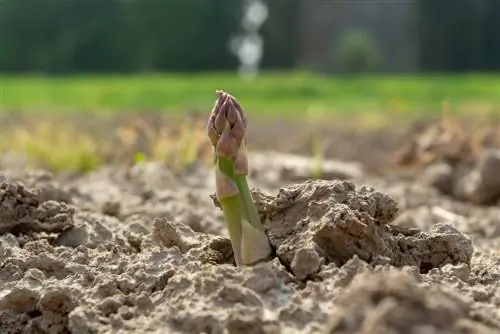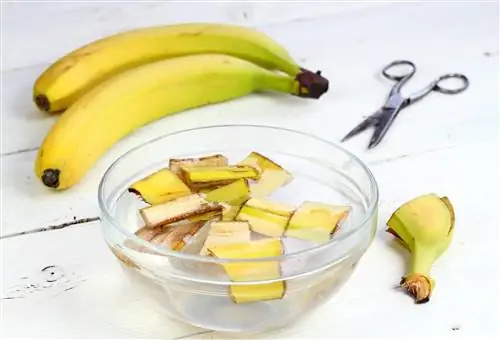- Author admin [email protected].
- Public 2023-12-16 16:46.
- Last modified 2025-01-23 11:22.
Stinging nettle broth is used in ornamental and kitchen gardens to strengthen plants and as an ecologically effective agent against pests. Setting it up is very uncomplicated and the amount of work is kept within manageable limits. In the following instructions we will explain to you how you can prepare the brew yourself and how it is applied.

How can you make nettle decoction from fresh nettles?
To make nettle stock, chop 1 kg of fresh nettles and place them in a plastic bucket. Add 10 liters of water, cover the bucket and let the mixture ferment for 24 hours for nettle broth or about two weeks for nettle manure. Stir the mixture daily.
Is there a difference between nettle manure and nettle broth?
Depending on the fermentation time, a distinction is made between nettle manure and nettle broth. Both variants are a nettle broth. While manure has to ferment for around two weeks, the broth is ready for use after just one day. This is a big advantage if, for example, you need to take quick action against pests such as aphids.
What is needed for the brew?
Small effort, big effect: The utensils you need for production can be found in almost every garden:
- Gardening gloves,
- sharp knife or scissors,
- Plastic bucket or tub,
- Stirring rod.
Since chemical processes take place between metal and the liquid, metal vessels are not suitable.
The actual brew consists of:
- 1 kg nettles,
- 10 liters of water.
Which parts of the nettle are suitable for the decoction?
In our latitudes, two species of nettle, the large and the small nettle, are widespread. Both are equally suitable for making a brew. You can use all parts of the plant, except the flowers.
Production of natural fertilizer
- Crush the nettles with secateurs and place them in the bucket.
- Add 10 liters of cold water, if possible rainwater.
- Cover the container with a grid and place it in the sun.
- You can use nettle broth after just 24 hours.
- Nettle manure needs to ferment for about two weeks until no more bubbles appear. During this time it is stirred daily.
How is the natural fertilizer applied?
Nettle manure should always be diluted. The following applies: Older plants tolerate the brew more concentratedly than younger ones.
- For large plants, add ten parts water to the manure.
- Fertilize young plants with a mixture of one part manure and 20 parts water.
- The lawn is also grateful for a fertilizer with the nettle broth. Dilute the manure with 50 parts water and use this to water the green area.
Nettle broth is not as aggressive as manure, which you can tell from the smell, among other things. It is still strong enough to repel pests, but is gentle on sensitive plants such as roses. You can pour undiluted broth into a watering can and water the plants with the strengthening agent.
You can use a sprayer for pest control. To prevent the fine nozzles from becoming clogged, you should pour both the diluted manure and the broth through a tea strainer placed over a funnel.
Nettle decoction made from nettle powder
You can buy powdered or pelleted nettles from gardening stores. This variant is particularly recommended if you don't need a lot of brew or don't have the opportunity to collect it yourself.
Tip
If you put the nettles in a net, the plant parts can be easily removed after fermentation. The broth does not need to be poured through a sieve and you can use it directly.

